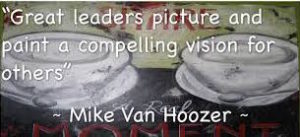
In a recent blog, consultant Joan Garry, provides some sage advice to board and staff leaders of nonprofits. In her blog, titled “How to Handle Criticism of Your Organization“, Joan opines on the state of our “strange new world”. A world she feels is not particularly kind or generous.
She points out that the polarization and incivility we witness in our politics also abounds in the world of nonprofit organizations – where negativity can be found both inside the organization (a staff upset with a change in health benefits) and externally (community members feel voiceless in some kind of directional change.) And of course we always have the local blogger or wannabe journalist with a big ol’ bone to pick.

Joan says many refer to dealing with these types of situations as “crisis management”. However, she says we should reframe these situations and see them as avoiding the “mismanaging” of a small issue until to blows up into a “crisis”. In fact, Joan suggests some “crisis” are self-inflicted, resulting from a small issue that leaders fixate on until it becomes a bigger issue.
Joan suggests five ways nonprofit leaders can cut a crisis off at the pass just by handling criticism well.
5 WAYS TO HANDLE CRITICISM AND AVOID CRISIS
1. Preempt it: Is there a decision you are going to make that may be met with community, board, or staff criticism? Meet ahead of time with key influencers. Sell in the benefit or the importance of the decision. You hear the positive nature of that statement? No defensiveness.
Don’t lead with, “Look, I know you are not going to like this but….”
 Here’s an example on a small scale: I was in love with a new logo we had designed. But it was abstract and open to interpretation. Frankly, that’s why I loved it and also why I knew some board members would hate it.
Here’s an example on a small scale: I was in love with a new logo we had designed. But it was abstract and open to interpretation. Frankly, that’s why I loved it and also why I knew some board members would hate it.
As the E.D., the decision was mine. But the board’s criticism would be singularly unhelpful as we took on re-branding.
So I went to the board members I was sure would hate it and the ones whose voices would carry the most weight. In my presentation about what we loved about the logo and why it was powerful, I included quotes from those folks. Some of them were actually pretty funny.
But I was able to position the logo exactly the way I wanted it to be understood. Open to lots of interesting and powerful interpretations. I even asked my ten-year-old and included her quote.
The presentation was a hit. The logo was embraced.
 2. Honor the voices of dissent: This can be very hard for folks who are defensive or have big egos, but you have got to go there. It’s best if you can get to those folks ahead of time, before you decide, so that you can honestly say you heard from them some of the potential downside.
2. Honor the voices of dissent: This can be very hard for folks who are defensive or have big egos, but you have got to go there. It’s best if you can get to those folks ahead of time, before you decide, so that you can honestly say you heard from them some of the potential downside.
3. Paint a vision: In the first example above, the criticism came because of some kind of change. People really don’t like change (most of the time… a clear exception here would be a salary increase) and will find reasons to criticize it.
 In my mind, the biggest obstacle to successful change management is that there is no vision attached to the change. “As a result of this new thing, our organization will, in two years, be able to X.” Get folks excited about what the change represents and the decision goes down a lot easier. It is the best way to turn critics into champions.
In my mind, the biggest obstacle to successful change management is that there is no vision attached to the change. “As a result of this new thing, our organization will, in two years, be able to X.” Get folks excited about what the change represents and the decision goes down a lot easier. It is the best way to turn critics into champions.
4. Communicate twice as much as you want to. And in person: Early on in my tenure, I made a significant decision in the organization – one that would seriously diminish the power and authority of a group of volunteers.
For many important reasons, I felt it was critical that the staff own the decision. But I had already made up my mind so this was not a situation where I could ask for legitimate input. Doing that can make matters worse, by the way.

I had to tell the volunteers, some of who had been part of the organization for a decade. Most of them were in LA and I was in NY. My gut said I had to go and meet with them in person.
I did. None of them could remember the last time the E.D. had met with them. I had learned their names and was able to talk about something they had contributed. When I talked about the new decision making, they were unhappy but my decision was clear and I had a very clear rationale and it was also clear they were being told and not asked for their advice.
Some of those volunteers said that was when they knew they had a really good leader. And I was taking power and authority away from them!
Please remember: a gap in information is ALWAYS filled. If you have a group that is concerned about something and feels voiceless, they will fill it.
And not the way you want them to.
 5. Just apologize: Sometimes criticism is real and justified. I’m not sure why it is so damned hard for folks to offer a simple, no-strings-attached apology. But sometimes it is the single best way to acknowledge the voice of the critic and ensure that the criticism does not escalate.
5. Just apologize: Sometimes criticism is real and justified. I’m not sure why it is so damned hard for folks to offer a simple, no-strings-attached apology. But sometimes it is the single best way to acknowledge the voice of the critic and ensure that the criticism does not escalate.
ONE BONUS PIECE OF ADVICE

Get outside of the echo chamber. In the heat of criticism, ten client or community voices can feel like three hundred.
I’m not saying those ten people matter less because there are only ten. But I am saying that if you serve 5,000 folks a week, you need to remember that they are also your clients or members of your community.
What I really mean is that there is no better antidote to help you contend with criticism than to touch the work.
